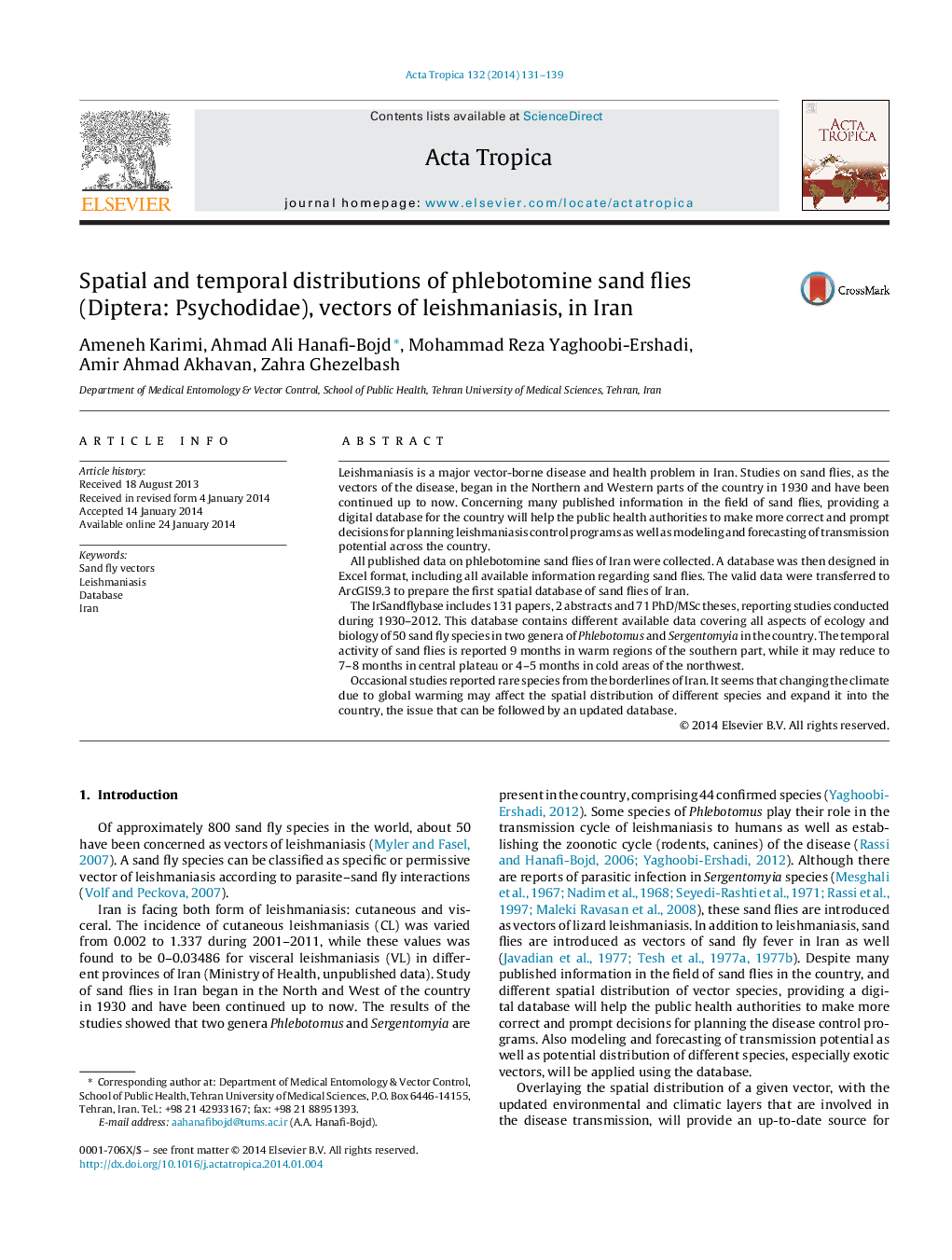| کد مقاله | کد نشریه | سال انتشار | مقاله انگلیسی | نسخه تمام متن |
|---|---|---|---|---|
| 3393817 | 1592791 | 2014 | 9 صفحه PDF | دانلود رایگان |

• The first digital database on the phlebotomine sand flies of Iran was established.
• It provides information on geographical distribution of vectors of leishmaniases.
• Parasitic infection in vectors of 3 forms of leishmaniasis is mapped.
• Modeling of transmission potential will be applicable using the database.
Leishmaniasis is a major vector-borne disease and health problem in Iran. Studies on sand flies, as the vectors of the disease, began in the Northern and Western parts of the country in 1930 and have been continued up to now. Concerning many published information in the field of sand flies, providing a digital database for the country will help the public health authorities to make more correct and prompt decisions for planning leishmaniasis control programs as well as modeling and forecasting of transmission potential across the country.All published data on phlebotomine sand flies of Iran were collected. A database was then designed in Excel format, including all available information regarding sand flies. The valid data were transferred to ArcGIS9.3 to prepare the first spatial database of sand flies of Iran.The IrSandflybase includes 131 papers, 2 abstracts and 71 PhD/MSc theses, reporting studies conducted during 1930–2012. This database contains different available data covering all aspects of ecology and biology of 50 sand fly species in two genera of Phlebotomus and Sergentomyia in the country. The temporal activity of sand flies is reported 9 months in warm regions of the southern part, while it may reduce to 7–8 months in central plateau or 4–5 months in cold areas of the northwest.Occasional studies reported rare species from the borderlines of Iran. It seems that changing the climate due to global warming may affect the spatial distribution of different species and expand it into the country, the issue that can be followed by an updated database.
Figure optionsDownload as PowerPoint slide
Journal: Acta Tropica - Volume 132, April 2014, Pages 131–139